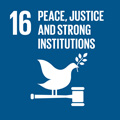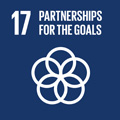- Docente: Luca Colliva
- Credits: 6
- SSD: L-OR/16
- Language: Italian
- Teaching Mode: Traditional lectures
- Campus: Ravenna
- Corso: Second cycle degree programme (LM) in History, preservation and enhancement of artistic and archaeological heritage and landscape (cod. 9218)
-
from Mar 28, 2025 to May 12, 2025
Learning outcomes
The course aims to introduce the student to the complex field of archaeology of the Indo-Iranian borderland, a place of important phenomena of intersection between the Iranian and Indian worlds, in the pre-Islamic historical period, through the deepening of a monographic theme, different from year to year, addressed on the basis of the direct examination of historical, literary and archaeological sources, considered in the critical perspective of scientific research. At the end of the course, the student: - has acquired the specific knowledge of the monographic theme dealt with; - has developed the capacity for autonomous judgement in order to deal critically with the vast bibliography existing on the archaeology of the region; - has the necessary learning skills to deal with sources for archaeological research with rigorous methodology.
Course contents
The course concerns a single theme of the archaeology of the Indo-Iranian frontier, studied in more a detailed monographic perspective, with a particular attention towards critics and methodology.
The theme of the 2024-25 course is: " Critical introduction to the study of the archaeological landscape of the Indo-Iranian frontier between the Achaemenid and Sasanian periods ".
The course will provide a concise overview of the challenges associated with the diachronic study of the archaeological landscape of the Indo-Iranian frontier through the analysis of some emblematic cases.
An introduction to the geography, history, culture and religions of the Indo-Iranian frontier will preface the monographic section of the course. This foundational knowledge is essential to provide the necessary groundwork for the monographic study.
Some hours will be dedicated to the state of the art, presenting the main actors of archaeological research in the area to better adhere to the methodological perspective of the course of study.
Some hours will also be dedicated to learning about the main institutions in charge of safeguarding cultural heritage in the area and the main local and international archaeological collections, in order to illustrate strategies and problems concerning cultural heritage protection and enhancement in the area.
Main topics covered during the course:
• Geographical, historical, cultural, and religious overview of the area.
• Overview of the history of archaeology on the Indo-Iranian frontier: the DAFA and the MAIA, the Italian Archaeological Mission in Afghanistan. Presentation of some emblematic sites.
• The main archaeological collections in Italy and around the world.
• The Achaemenid satrapies and their fate after the fall of the empire.
• Sistan: a diachronic study of the territory through presenting some emblematic sites.
• Clay and stucco productions, diachronic development, and historical-geographical and cultural contextualization of the main documented productions and sites.
• The Kushan sanctuaries, diachronic development, and historical-geographical and cultural contextualization.
Readings/Bibliography
TEXTS FOR THE PREPARATION OF THE ORAL EXAM:
For an introduction to the archeology of the Indo-Iranian frontier:
- P. Callieri "INDIA ii. HISTORICAL GEOGRAPHY: THE ANCIENT FRONTIER WITH IRAN", "INDIA iii. POLITICAL AND CULTURAL RELATIONS: ACHAEMENID PERIOD", "INDIA iv. POLITICAL AND CULTURAL RELATIONS: SELEUCID, PARTHIAN, SASANIAN PERIODS" in Encyclopædia Iranica, online edition, 2012, available at:
- https://www.iranicaonline.org/articles/india-ii-historical-geography
- https://www.iranicaonline.org/articles/india-iii-relations-achaemenid-period
- https://www.iranicaonline.org/articles/india-iv-relations
- B. Jacobs, “ACHAEMENID SATRAPIES”, Encyclopædia Iranica, online edition, 2011, available at http://www.iranicaonline.org/articles/achaemenid-satrapies
- C. Lo Muzio, Archeologia dell'Asia centrale preislamica. Dall'età del Bronzo al IX secolo d.C., Firenze, 2017, pp. 117-149.
Monographic section:
- Forgione, G. (2021) Clay-based sculptures: analysis of technical aspects and typologies. Parthica. Incontri di culture nel mondo antico, 23, 2021 [2022], 145-176.
- Soroor Ghanimati, “KUH-E ḴᵛĀJA,” Encyclopædia Iranica, online edition, 2015, available at:
- http://www.iranicaonline.org/articles/kuh-e-khvaja
- F. Maniscalco, Arachosia. Terra d'incontro tra oriente e occidente, Roma, 2014. Sono obbligatori solo il Capitolo III, "IL DOMINIO DELL’ARACHOSIA DALLA DISFATTA DELL’IMPERO ACHEMENIDE ALL’ASCESA DI SELEUCO NICATORE" e le "CONCLUSIONI"
- G. Maresca, "Between ‘Early’ and ‘Late’ Iron Age in south-eastern Iran: notes on the possibility to evaluate the ‘Achaemenid impact’ on the area", in Vicino Oriente XXII (2018), pp. 197-211. Available at:
- http://www.journal-vo.it/Publicazioni/VO%20XXII/VO_XXII_PDF_Autori/VO_XXII_197-211_Maresca.pdf
For non-attending students, the following bibliography is added:
- R. Boucharlat, "Iran. Sistan-Baluchistan" , in P. Briant & R. Boucharlat, eds., L'archéologie de l'empire achéménide: nouvelles recherches (Persika, 6), 268-270. Paris, 2005.
- A. Filigenzi - R. Giunta, "The Italian Archaeological Mission in Afghanistan". In B. Cassar and S. Noshadi Keeping History Alive Safeguarding Cultural Heritage in Post-Conflict Afghanistan, 80-91. Kabul, 2015.
- B. Genito, "Alla ricerca di un’archeologia perduta. Spunti e riflessioni su uno scavo di quaranta anni fa: Umberto Scerrato e il suo Sistan (In Search for a Lost Archaeology. Ideas and Thoughts on a forty years ago excavation: Umberto Scerrato and his Sistan)", in Museo Orientale, Umberto Scerrato, 291-302. Napoli, 2012. Available at:
- http://www.museorientale.unior.it/catalogo/files/assets/basic-html/index.html
However, it is strongly recommended that non-attending students contact the teacher to arrange a specific programme and bibliography.
---
Among the texts used for preparing the lectures, which are useful for personal in-depth study but NOT REQUIRED FOR THE ORAL EXAM, the following are noted:
- P. Callieri, "L'art du stuc à la lumière des trouvailles récentes". In P. Callieri Architecture et représentations dans l'Iran sassanide, 103-127. Paris, 2014.
- Kawami, Trudy S. (1987) "Kuh-e Khwaja, Iran, and Its Wall Paintings: The Records of Ernst Herzfeld": Metropolitan Museum Journal, v. 22 (1987). Available at:
- https://www.metmuseum.org/art/metpublications/kuhe_khwaja_iran_and_its_wall_paintings_the_metropolitan_museum_journal_v_22_1987)
- C. Lo Muzio, Archeologia dell'Asia centrale preislamica. Dall'età del Bronzo al IX secolo d.C., Firenze, 2017.
- William B. Trousdale - Mitchell Allen, The Archaeology of Southwest Afghanistan, Volume 1 Survey and Excavation. Edinburg, 2022.
The list will be updated during the course.
Teaching methods
Frontal lessons with direct and critical examination of the archaeological, bibliographic and iconographic documentation through the projection of images, texts and plans (when possible, also made available on the Virtuale platform).
The aim of the course is to introduce students to the main issues of the proposed research topic. Emphasis is placed on the methodological approach to the research to stimulate critical reflection by the student.
Assessment methods
The examination consists of an oral interview to assess the critical and methodological skills matured by the student and the acquisition of basic knowledge in the field of the archaeology of the Indo-Iranian borderland.
The evaluation will take into account the student's ability to orientate within the sources and the bibliographic material in order to obtain useful information that will enable him to explain themes and problems and to know how to connect them.
In addition to the contents, students will be evaluated on the ability to synthesize and analyse archaeological themes and the ability to express themselves adequately and with appropriate language.
Full acquisition of these skills and an exhaustive knowledge of the matter will be assessed with excellence marks (27-30).
A predominantly mnemonic acquisition of course's contents and discontinuous language and logical skills will be assessed with discrete marks (24-26).
A minimum level of knowledge of the course contents combined with training gaps or inadequate language and logical skills will be evaluated with marks slightly above the sufficiency (18-24).
The absence of a minimal acquisition of the course contents combined with inadequate verbal expression and logical skills will be considered insufficient.
Teaching tools
Dr Colliva will make available on the 'Virtuale' platform texts, images, and supplementary teaching materials.
Students who, for reasons dependent on disabilities or specific learning disorders (DSA), require compensatory tools may inform the lecturer of their needs so that they can be directed to the contact persons and agree on the most appropriate measures to be taken.
All students who feel the need for materials preparatory to the course are invited to contact the lecturer for appropriate support.
As a possible facultative supporting bibliography we recommend:
- AA. VV., “L'archeologia dell'Iran. La frontiera Indo-Iranica”, in Enciclopedia Archeologica, III. Asia, Roma, Istituto della Enciclopedia Italiana Treccani,2005. pp. 580-592. Reperibili anche sul sito internet della Treccani (www.treccani.it).
For those who have not already attended courses dedicated to the archaeology of Iran, we recommend reading the following:
- J. Wiesehöfer, La Persia Antica, Bologna, 2003.
For those who have not already attended courses dedicated to the archaeology of India, we recommend reading the following:
- C. Lo Muzio & M. Ferrandi (eds), India. Milano, Electa, 2008.
Office hours
See the website of Luca Colliva
SDGs




This teaching activity contributes to the achievement of the Sustainable Development Goals of the UN 2030 Agenda.
